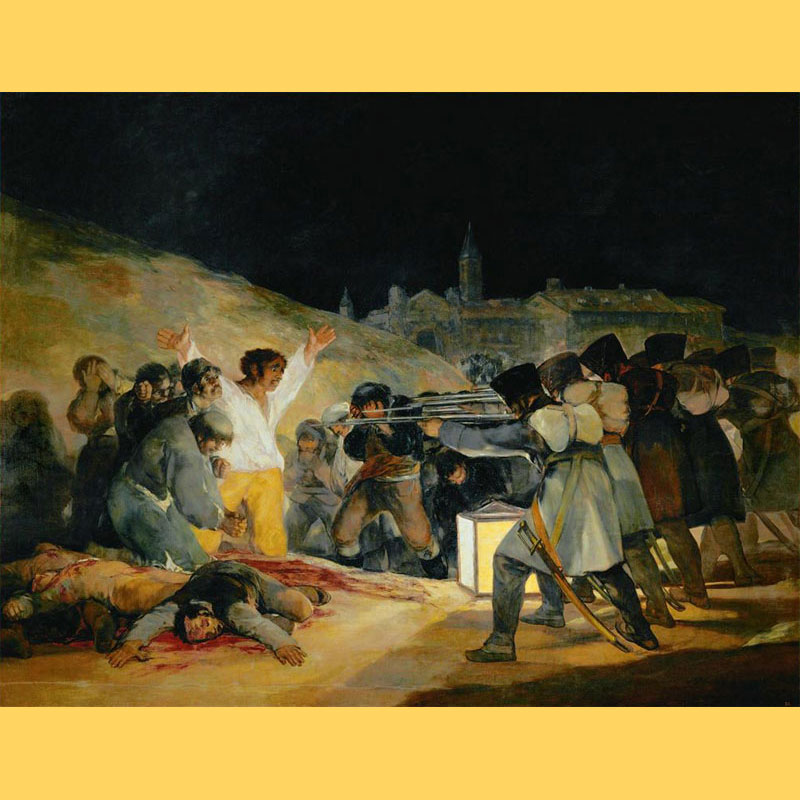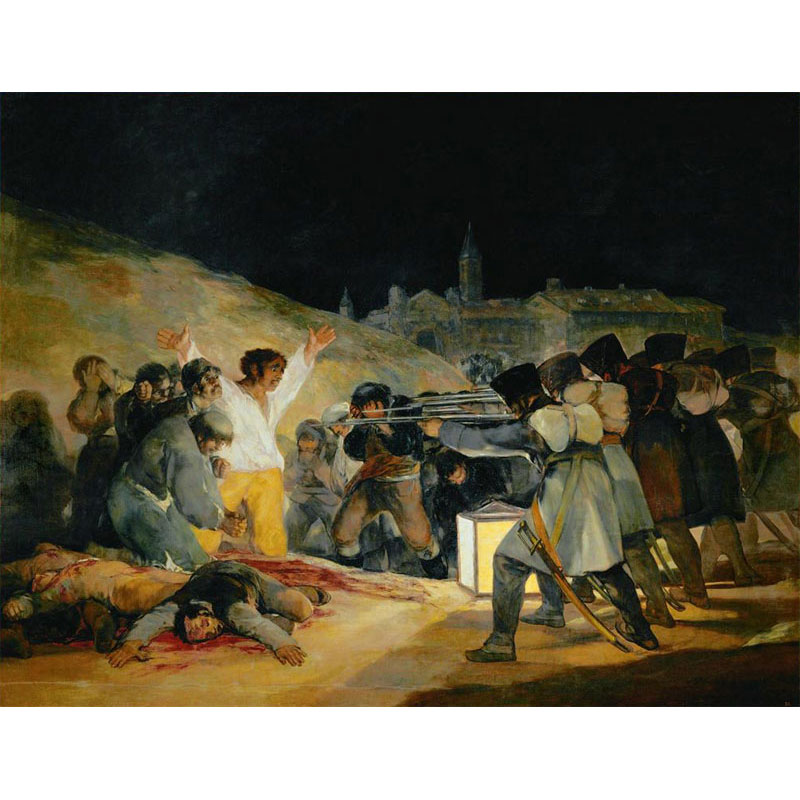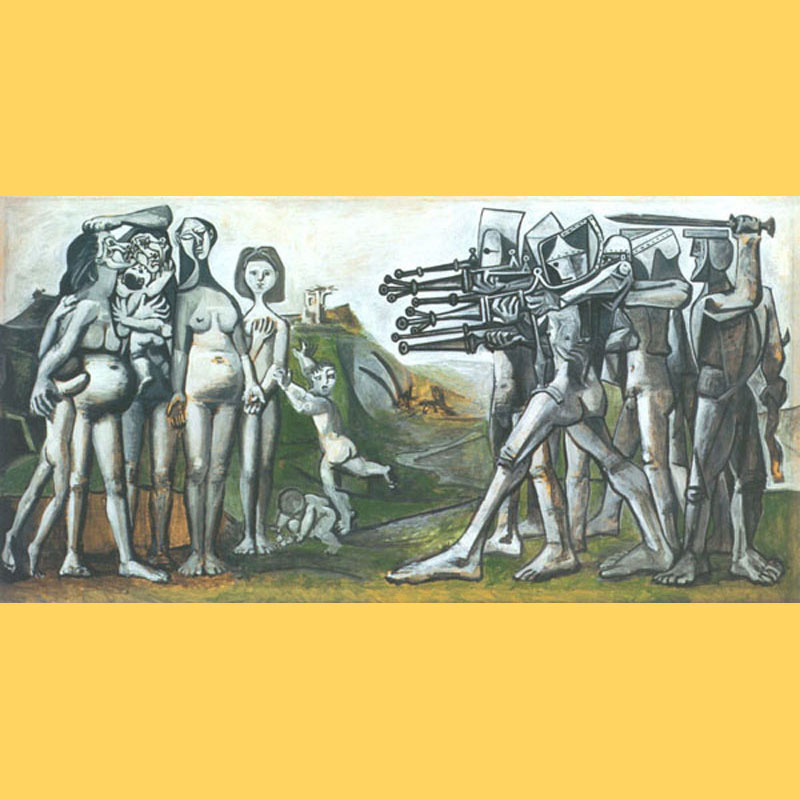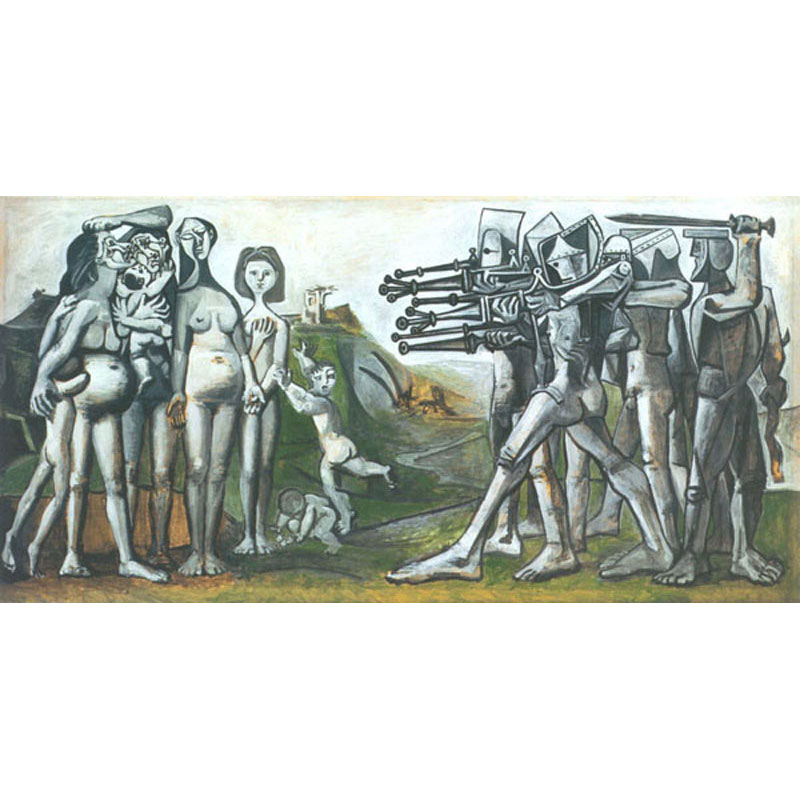Spanish Masters Compared
Francisco de Goya, Spain
The Third of May, 1808
1814
Oil on canvas
266 x 345 cm
Museo del Prado
http://en.wikipedia.org/wiki/The_Third_of_May_1808
This painting depicts the aftermath of an uprising in Spain that was put down by the
occupying Napoleonic army. The French decreed that anyone who had been armed when captured
would be put to death.
Goya painted the subject almost as soon as the political situation and his position as
court painter allowed. Unlike previous artists' treatments of the subject of war and even
its companion piece, the more conventional and forgettable The Second of May, Goya's
Third of May portrayed the episode not as an epic moment in history, not as a heroic
scene of matrydom, but as a brutal slaughter.
On the right stands the faceless, regimented firing squad. The stance of the central figure
on the left has been likened to that of a crucified Christ. The lighting and coloring
of the work heighten the drama.
During the time he painted The Third of May, Goya was also working on his series
The Disasters of War based on the Penisular War, which was the first to be known
as a guerilla war – blurring the distinction between civilian and soldier.
Pablo Picasso, Spain
Massacre in Korea
1951
Oil on canvas
110 x 210 cm
Musée National Picasso
http://en.wikipedia.org/wiki/Massacre_in_Korea
This painting depicts an attack on Korean civilians by U.S. forces in 1950. The incident remained
controversial for some time and was only officially investigated decades later. The change in artist
patronage allowed Picasso's politically charged work to follow the incident it portrayed more quickly
than did Goya's.
Following Goya, Picasso portrays the soldiers with a geometric, mechanistic, almost inhuman abstraction.
On the other hand, he shows one victim with little to no abstract and the others seem to wear masks
exaggerating their anguish. If Goya's central "victim" figure is considered reminiscent of depictions
of Christ, then one could say that Picasso's are reminiscent of depictions of the Virgin Mary and
Mary Magdalene, especially the stylized lament of those found in the Deposition from the Cross
painted during the Northen Renaissance.
Compared to Goya's Third of May or even his own Guernica, Picasso's Massacre in
Korea seems understated, even matter-of-fact in its portrayal. This may reflect the actual
incident, or it may reflect the cumulative effect that all of the war he witnessed had on Picasso.



